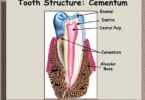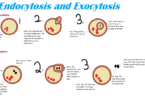DIFFERENCE B/W SEXUAL AND ASEXUAL REPRODUCTION
Summary: Difference Between Sexual and Asexual Reproduction is that sexual reproduction the offspring have combination of genes inherited from two parents. It involves the production and union of gametes. While Asexual reproduction is the mode of reproduction without the union of gametes or sex cells.
Reproduction
Reproduction produces new generations and maintains species or produce offspring that may or may not be the exact copy of their parents. It is the part of life-cycle, recurring frame of events in which animal grow, develop and reproduce according to a program of instruction encoded in the DNA they inherit from their parents. Reproduction has nothing to do with the survival of individual but it is very important for the survival of species and population. There are 2 basic types of reproduction.
- Asexual reproduction
- Sexual reproduction

Sexual vs Asexual Reproduction
SEXUAL REPRODUCTION
Sexual reproduction the offspring have combination of genes inherited from two parents. It involves the production and union of gametes. Meiosis and genetic recombination leads to the production genetic diversity therefore the offspring of sexual union are somewhat different from their parents. There are two different types of fertilization (union of gametes) strategies in sexual reproduction.
- External fertilization
- Internal fertilization
EXTERNAL FERTILIZATION
Many invertebrates living in aquatic environment release their gametes into water in which they live allowing external fertilization. In these invertebrates the gonads are usually simple often transient structures that produce and release gametes from the body through various arrangements of coelomic ducts, metanephridia, sperm ducts or oviducts.
INTERNAL FERTILIZATION
In terrestrial environment fertilization is internal. Terrestrial organisms use internal fertilization to transfer sperm from male to female and have structures that facilitate such transfer. Sperms are produced in the testes and transported via sperm duct to a storage area called the seminal vesicle. Some invertebrates incorporate sperms into packets termed as spermatophores which provide protective casing for sperm and facilitate their transfer of large numbers of sperm with minimal loss. Sperm from spermatophore are passed into ejaculatory duct to a copulatory organ e.g penis, gonopore etc. the copulatory organ is used as an intromittent structure to introduce sperm into the female’s system.
In female ova eggs are produced in the ovaries and transported to oviduct. Sperm move upto oviduct where they encounter the ova and fertilize them. This may lead to external development as in reptiles and birds. They lay shelled eggs to protect developing embryo from harsh terrestrial conditions. Such animals are called oviparous.
In mammals internal fertilization leads to internal development inside the body of female which gives birth to young one such animals are called viviparous.
In some mammals like duckbill platypus and spiny ant eater internal fertilization leads to internal development of young one in a shelled egg and when development is completed, shelled egg is laid which hatches to offspring. This is ovoviviparous condition. Viviparous and ovoviviparous animals provide more protection to their young one during development.
Some sexually reproducing animals occasionally depart from the basic reproductive mode and exhibit variant forms of sexual reproduction.
- Hermaphroditism: occurs when an animal has both functional male and female reproductive systems. This dual sexuality is also called monoecious condition. Although some hermaphrodites fertilize themselves most also mate with another member of the same species. When this occur such animal serve as both male and female donating and receiving sperms. Hermaphroditism is beneficial to sessile animals that may only occasionally encounter the opposite sex.
- Sequential hermaphroditism: occurs when animal is one sex during one phase of its life cycle and the opposite sex during another phase. Hermaphrodites are either protogynous or protandrous. In protandryan animal is a male during its early life history and female later in the life history. The reverse is true for protogynous animals.
Most Visited Difference’s by People:
Difference Between DNA and RNA
Difference Between Sex and Gender
Difference Between HMO and PPO
ASEXUAL REPRODUCTION
Asexual reproduction is the mode of reproduction without the union of gametes or sex cells. It means that it requires only single parental organism which give rise to offspring by mitotic cell division, during which the total chromosomal content of the cell is exactly replicated and passed on to daughter cell so that offspring are genetically identical to the parent. Asexual reproduction effectively increases the numbers of species. But the species reproducing asexually tend to evolve very slowly because all the offspring of any one individual are alike, providing less genetic diversity for evolutionary selection. Asexual reproduction is an effective method of increasing number in plants. However in animals it is less common. Different methods of asexual reproduction in animals are as follow:
FISSION, BUDDING, FRAGMENTATION, PARTHENOGENESIS, CLONING, IDENTICAL TWINS.
Fission
It is the division of one cell, body or body part into two. In this process the cell pinches into two by an inward furrowing of plasma membrane. Binary fission occurs when the division is equal; each offspring contains approximately equal amounts of protoplasm and associated structures. It is most common in protozoans as it is their only means of reproduction. In fission plane of division may be asymmetrical, transverse or longitudinal depending on the species.Some worms like flatworms and annelids reproduce by forming numerous constrictions along the length of the body a chain of daughter individual results. This type of asexual reproduction is called multiple fission.
Budding
In budding certain cell divide rapidly and develop on the body surface and form an external bud. The bud cell proliferates and form a cylindrical structure, which develops into a new animal, usually breaking away from the parent. If the bud remains attached to the parent they form a colony. Budding is common in lower invertebrates. Internal budding produces gemmules which are collections of many cells surrounded by a body wall.
Fragmentation
In this type of asexual reproduction in which a body part is lost and then a new organism is regenerated from this broken part. In sea anemones small piece break off from the adult and develops into a new individual.
Parthenogenesis
It is the development of egg without fertilization. It is a spontaneous activation of mature egg, followed by normal egg divisions and subsequent embryonic development. As these eggs are not fertilized so they do not receive male chromosomes. These animals have less genetic variability than do animal with chromosome sets from two parents.
Cloning
It is a technique in which exact copy of organism is created by using complete genetic material of somatic cell. In cloning the nucleus from somatic cell is removed and introduced into an egg cell whose own nucleus is destroyed by radiation. This egg then develops into an organism genetically identical to the parent who has contributed the nucleus.
Identical Twins
They are produced mitotically (asexually). When embryo independent cells, each giving rise to new individual which are genetically identical and hence called identical twins.
ADVANTAGES AND DISADVANTAGES OF ASEXUAL AND SEXUAL REPRODUCTION
Asexual Reproduction Disadvantages
Marine environment is generally stable hence it supports asexual reproduction because a combination of genes that matches the relatively unchanging environment is an advantage over a greater number of gene combinations many of which do not match the environment.
In other habitats asexual reproduction is seasonal. The season in which asexual reproduction occurs coincides with the period when the environment is hospitable. Under such conditions it is advantageous for the animal to produce asexually large number of progeny with identical characteristics.
Lacking genetic variability bestowed by meiosis and sexual processes the population of genetically identical animals stands greatly increased chance of being devastated by a single disease or environmental insult such as long drought. Asexually reproducing organism can cope with a changing environment only through relatively rare spontaneous mutations that prove to be beneficial. However most mutations are lethal and herein lies one of the greatest disadvantages of asexual reproduction. All such mutations are passed on to every offspring along with the normal unmutated genes.
Sexual Reproduction Disadvantages
Evolution of sexual reproduction leads to differentiation of sexes (male or female). Organisms are either having one sex or both sexes in animals but in plants bisexuality in general is retained. Despite bisexuality cross fertilization is ensured for maintaining the advantage of genetic recombination.New combination of traits can arise more rapidly in sexually reproducing animals because of genetic recombination. The resulting genetic diversity increases the chances of the specie surviving sudden environmental change. Furthermore, variation is the foundation for evolution.in contrast to asexually reproducing population that retain mutations, sexually reproducing populations tend to eliminate deleterious and lethal mutations.
It also has some disadvantages. Animal that cannot reproduce asexually can never bequeath its own exact set of genetic material to its progeny. Sexual reproduction bestows on progeny a reassortment of maternal and paternal chromosome. Thus the same mixing process that create the adaptive gene combinations in the adult work to dismantle it partially in the offspring. In addition man of the gametes that are released are not fertilized,leading to significant waste of metabolic effort.
Also Read:
Difference Between Cell and Tissue
Difference Between Tissue and Organ
Difference Between Enamel and Cementum
What is the Difference Between Sexual and Asexual Reproduction?
SEXUAL
One parent only.
No gametes are produced.
Meiosis absent.
Offspring identical to parent.
Commonly occurs in plants, less differentiated animals and micro-organisms. Abesnt in more differentiated animals.
Often results in rapid production of large number of offspring.
ASEXUAL
Usually two parents.
Gametes are produced.
Meiosis present in some stage in life cycle.
Offspring are not identical to parents.
Occurs in majority of plants and animals.
Less rapid increase in number.







Leave a Comment
You must be logged in to post a comment.